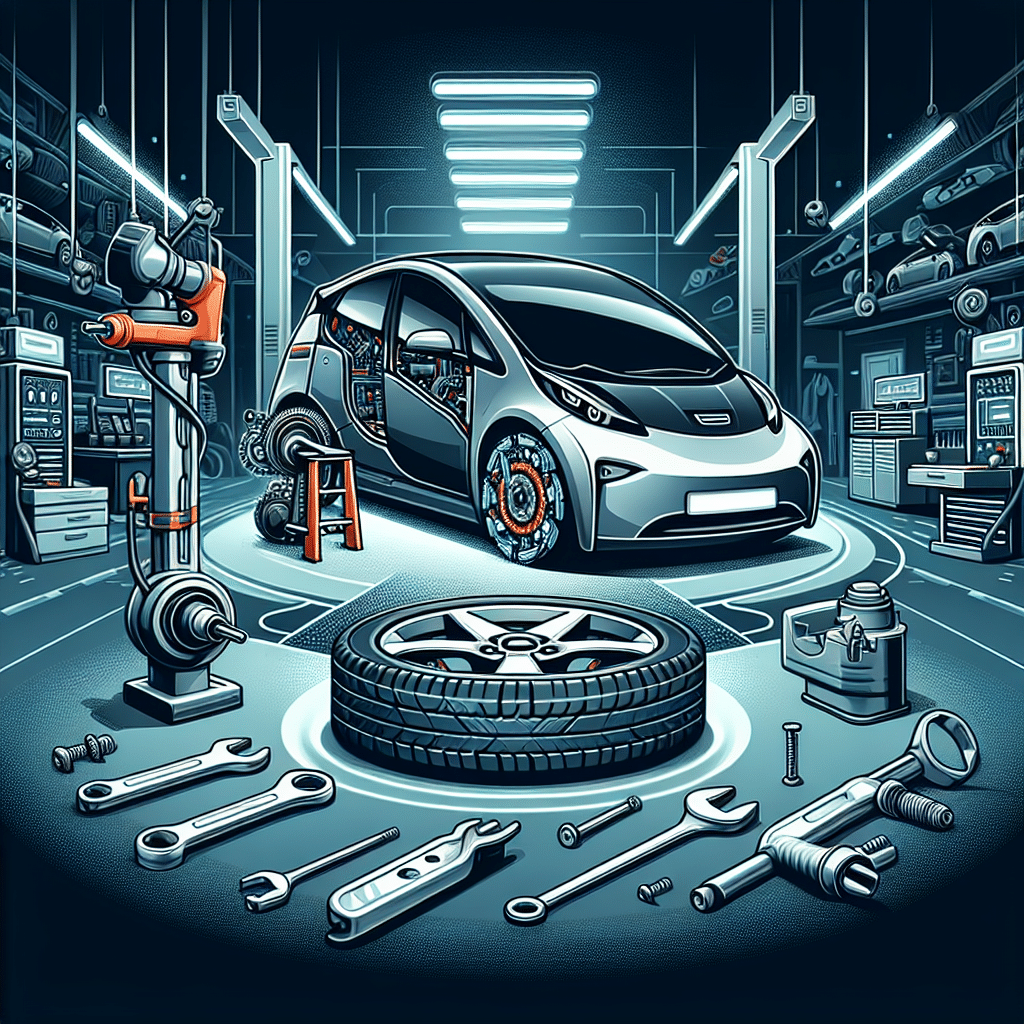Electric Vehicle Tire Maintenance
Understanding EV Tires
Electric vehicles (EVs) differ from traditional internal combustion engine vehicles. The instant torque and heavier battery packs can lead to unique tire wear patterns. Selecting the right tires is crucial, as they must support the increased weight and provide better grip and efficiency.
Choosing the Right Tires
- All-Season vs. Performance Tires: All-season tires provide versatility, while performance tires are designed for optimal handling and traction.
- Tire Specifications: Pay attention to the load index and speed rating. Tires with low rolling resistance are generally preferred for EVs as they maximize range.
- Check for EV-Specific Models: Some manufacturers produce tires specifically designed for electric vehicles, accounting for their distinct characteristics.
Tire Pressure Maintenance
- Regular Checks: Monitor tire pressure monthly. EVs may have a lower threshold for under-inflation due to their weight and torque characteristics.
- Temperature Impact: Tire pressure fluctuates with temperature; it can drop in colder months. Adjust accordingly to maintain optimal pressure, typically between 35-40 PSI.
Tread Depth and Wear
- Tread Depth Measurement: Use a tread depth gauge, aiming for a minimum of 2/32”. Replace tires that show uneven wear patterns or insufficient tread.
- Uniform Wear: Ensure even tire wear by rotating tires every 5,000 to 7,500 miles. Check the alignment and balance regularly to prevent premature wear.
Seasonal Tire Changes
- Winter Tires: For those in colder climates, winter tires are essential. Start using them when temperatures consistently drop below 45°F.
- Storage Considerations: Store tires in a cool, dry place and protect them from direct sunlight, moisture, and extreme temperatures.
Electric Vehicle Brake Maintenance
Understanding EV Brakes
EVs utilize regenerative braking systems that capture energy during braking, which can lead to reduced wear on traditional brake components. However, regular maintenance is still crucial.
Brake Pads and Rotors
- Brake Pad Lifespan: Regenerative braking reduces conventional brake wear, but inspecting brake pads is essential every 20,000-30,000 miles.
- Rotor Condition: Check brake rotors for scoring or warping. They typically last longer than pads, but when changing pads, inspect rotors for a smooth surface.
Brake Fluid Maintenance
- Fluid Level Check: Brake fluid should be checked regularly; it absorbs moisture over time, which can affect braking performance. Replace every 2 to 3 years or as specified in the owner’s manual.
- Fluid Type: Ensure you are using the correct grade of brake fluid as recommended by the manufacturer, usually DOT 3 or DOT 4.
Regenerative Braking System
- System Functionality: Regularly check that the regenerative braking system is functioning correctly, often indicated by reduced energy consumption and increased range during deceleration.
- Calibrating Systems: Certain EVs may require software updates or recalibrations for the braking system—ensure these are up to date during routine maintenance.
General Maintenance Tips for EV Tires and Brakes
Professional Inspections
- Routine Maintenance Appointments: Schedule regular maintenance appointments with a qualified technician who understands EV systems to ensure comprehensive tire and brake inspections.
- Diagnostic Tools: Utilize diagnostic tools that can assess tire pressure monitoring systems (TPMS) and brake system performance.
Using Technology
- Tire Monitoring Systems: Many modern EVs feature TPMS that alert you when tire pressure drops. Take advantage of these systems and maintain awareness of tire health.
- Brake Wear Sensors: Some vehicles come equipped with wear sensors; ensure they are functional to avoid premature wear.
Safe Driving Practices
- Smooth Driving: Adopt smooth driving and braking habits to extend the life of both your tires and brakes. Sudden acceleration or harsh braking leads to unnecessary wear.
- Weight Management: Avoid overloading your EV, as excess weight can increase wear on both tires and brakes.
Environmental Considerations
- Eco-Friendly Products: Select tire and brake maintenance products that are environmentally friendly. This may include low-VOC tire sealants and biodegradable brake cleaners.
- Recycling: Dispose of old tires and brake components responsibly. Many areas have recycling programs that facilitate environmentally sound disposal.
Final Thoughts
Maintaining the tires and brakes of your electric vehicle is fundamental to safety, performance, and efficiency. By following these guidelines closely, you can prolong the lifespan of your EV’s critical components while ensuring a smooth, reliable driving experience. Through regular checks, being aware of wear patterns, choosing the right products, and practicing safe driving habits, your electric vehicle can continue to perform optimally, providing you with the most efficient, eco-friendly ride possible.
